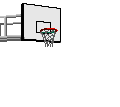
Windows 2000 (also referred to as Win2K) is a preemptive, interruptible, graphical and business-oriented operating system designed to work with either uniprocessor or symmetric multi-processor computers. It is part of the Microsoft Windows NT line of operating systems and was released on February 17, 2000. It was succeeded by Windows XP in October 2001 and Windows Server 2003 in April 2003. Windows 2000 is classified as a hybrid kernel operating system.Windows 2000 was made available in four editions: Professional, Server, Advanced Server, and Datacenter Server. Additionally, Microsoft offered Windows 2000 Advanced Server Limited Edition and Windows 2000 Datacenter Server Limited Edition, which were released in 2001 and run on 64-bit Intel Itanium microprocessors.[4] Whilst all editions of Windows 2000 are targeted to different markets, they each share a core set of common functionality, including many system utilities such as the Microsoft Management Console and standard system administration applications. Support for people with disabilities was improved over Windows NT 4.0 with a number of new assistive technologies, and Microsoft included increased support for different languages and locale information. All versions of the operating system support the Windows NT filesystem, NTFS 3.0,[5] the Encrypting File System, as well as basic and dynamic disk storage. The Windows 2000 Server family has additional functionality, including the ability to provide Active Directory services (a hierarchical framework of resources), Distributed File System (a file system that supports sharing of files) and fault-redundant storage volumes. Windows 2000 can be installed and deployed to corporate desktops through either an attended or unattended installation. Unattended installations rely on the use of answer files to fill in installation information, and can be performed through a bootable CD using Microsoft Systems Management Server, by the System Preparation Tool. Windows 2000 is the last NT-kernel based version of Microsoft Windows that does not include Windows Product Activation.At the time of its release, Microsoft marketed Windows 2000 as the most secure Windows version they had ever shipped,[6] however it became the target of a number of high-profile virus attacks such as Code Red and Nimda. More than seven years after its release, it continues to receive patches for security vulnerabilities on a near-monthly basis.








No comments:
Post a Comment